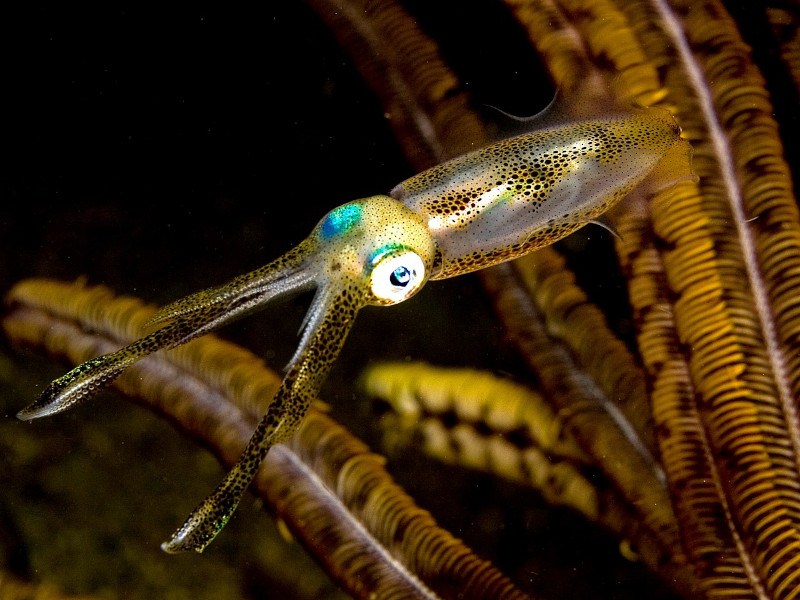
Glitter Squid Facts
- The colorful term of Glitter Squid represents only one of the common names given to this visually appealing creation of Nature and evolution. It does have several other general titles, though. These include the unique tags tiger squid, oval squid, and bigfin reef squid.
- Inside of scientific circles, however, it’s perhaps much better known by its purely technical name. This moniker, however, like so many such, remains quite difficult for the average layperson to pronounce. That’s because it holds the official epithet of Sepioteuthis lessoniana.
- The highly respected French naturalist René Primevère Lesson collected the first recognized specimen, sometime between 1822-1825. Another Frenchman, the naturalist, André Étienne Justin Pascal Joseph François d’Audebert de Férussa, later became the first to describe it.
- Presently, this marvel of Nature forms one of only three known species placed within its genus. Its also notable to science for playing an important role in ongoing medical research. The stunning creature serves as a valuable source of what are known as giant axons in the field.
- For the moment, researchers sadly lack sufficient information on the current population of this wonder of evolution. That state holds true both for its numbers and trends. The IUCN therefore presently shows it as Data Deficient on its published Red List of Threatened Species.
- The fascinating creature nevertheless should be considered as facing the same potential threats to its continued existence as all forms of life on earth today. Most of those dangers stem from the actions of man. Those perils include, among others, habitat loss and climate change.
Related Articles
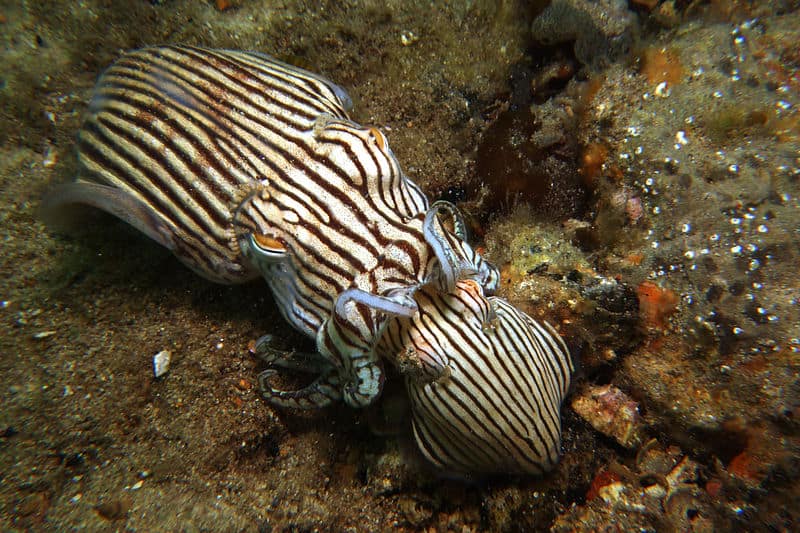
Striped Pyjama Squid
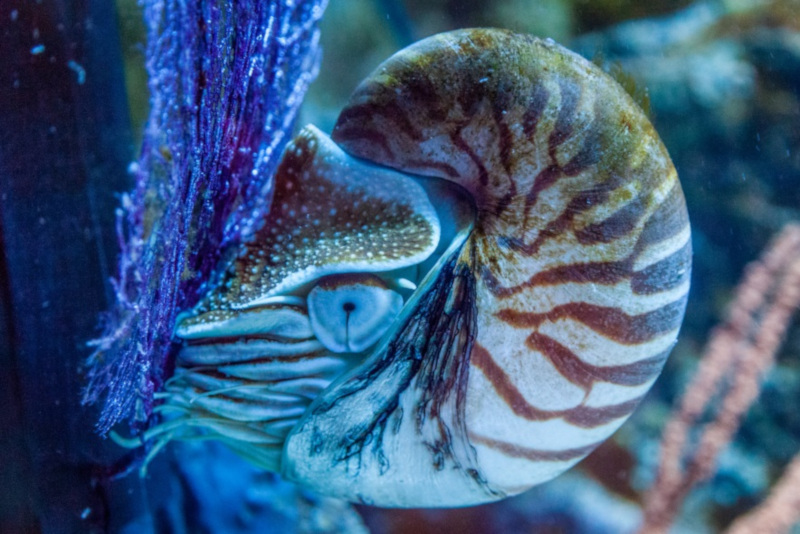
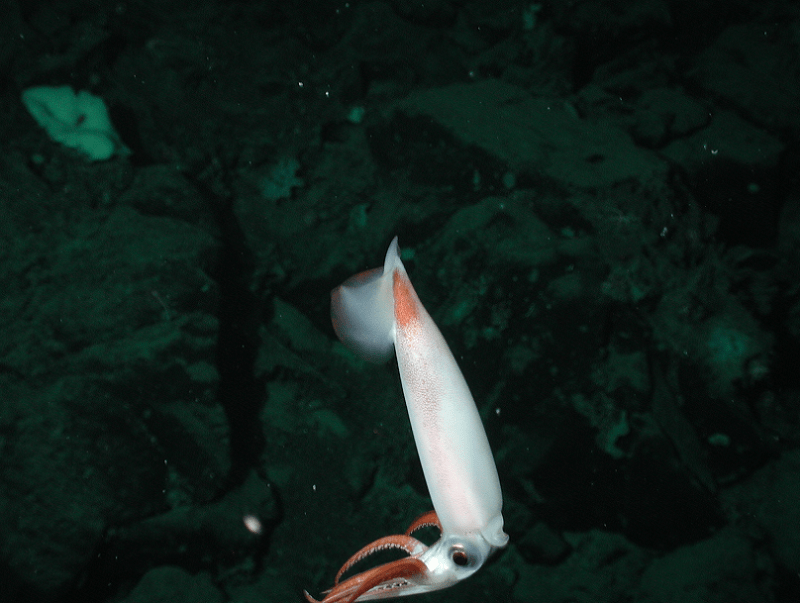
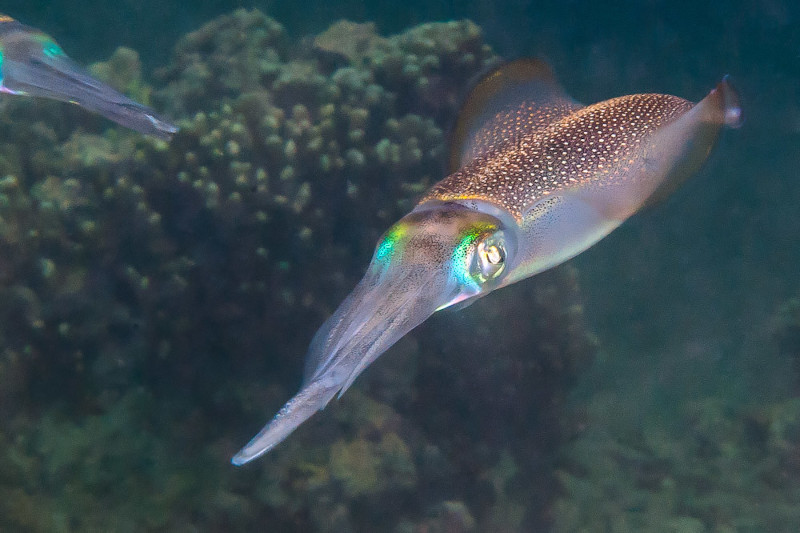
Glitter Squid Physical Description
The amazing Glitter Squid typically captivates those individuals lucky enough to encounter one of these intriguing animals in the wild. Yet, unlike some of their many cousins, they generally do so for reasons other than size. That’s true since this species is relatively small compared to others.
The amazing product of evolution also distinguishes itself from the majority of its kindred in yet another manner, as well. That’s in the fact that this marine beauty displays almost no noticeable amount of the physiological trait of sexual dimorphism. Telling the sexes apart can thus be difficult.
Mature specimens of both genders attain mantle lengths of roughly the same approximate size. A mean measurement for this equals roughly 8 – 12 in (20.3 – 30.5 cm). Exceptional individuals do occasionally develop, of course. These, though, appear wholly regardless of their gender.
Body masses also understandably remain relatively light. Examples of the species further tend to vary quite significantly in this regard, depending on various factors, such as age, gender, and even environmental conditions. On average, however, this ranges from 0.5 – 4.5 lb (0.23 – 2.04 kg).
In shape, the mantle, or body, develops as highly elongated and cylindrical in shape, tapering towards the posterior end. As its common name suggests, this Cephalopod also has prominent fins. The animal also possesses a pair of large, broad fins extending along the sides of its mantle, too.
It’s the coloring of the aptly-named Glitter Squid that receives the most attention from observers, though. This trait varies depending on factors such as age, gender, mood, and environmental conditions. But, it typically exhibits a range of colors and patterns that allow for camouflage.
These gorgeous hues include such dazzling shades as translucent white, sometimes accompanied by purple or reddish-brown patches. It also occasionally produces stripes, bands, and other patterns on parts of its body, appearing in colors of its choice. It accomplishes this change at will, in fact.
Like all squids, it also possesses a total of eight tentacles, attached to the mantle. These start as thick at the base, tapering at the ends to a narrow point. They develop as unequal in length, with each pair attaining different measurments. All pairs, though, display two rows of suckers.
- Kingdom: Animalia
- Phylum: Mollusca
- Class: Cephalopoda
- Order: Myopsida
- Family: Loliginidae
- Genus: Sepioteuthis
- Species: S. lessoniana
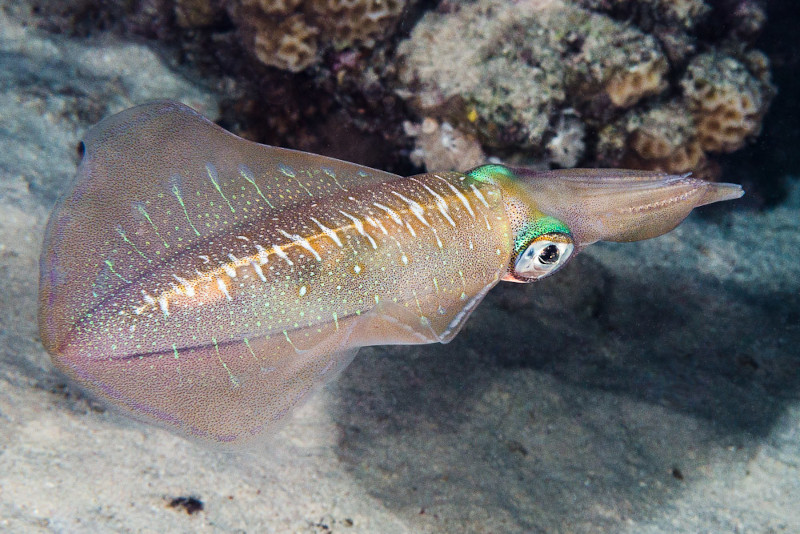
Glitter Squid Distribution, Habitat, and Ecology
The astonishing Glitter Squid evolved as native to a reasonably broad expanse of the marine waters of the earth. Given its extremely exotic nature, though, the location of that zone of habitation likely won’t surprise many people. It’s endemic to large parts of the Indian and Pacific Oceans.
Its primary range extends from the eastern coast of the continent of Africa, across the Indian Ocean, to Southeast Asia, Australia, and the western Pacific Islands. Evidence also indicates that it’s possibly now even present in the Mediterranean Sea. It’s unknown if it ever lived elsewhere.
This awesome wonder of the world’s seas displays both strong preferences in its choice of habitat, and a high degree of adaptibility in that regard when necessary. As a general principle, the impressive squid greatly prefers to maintain residence in various coastal and nearshore regions.
The intriguing mollusc also prefers to do so throughout both the tropical and subtropical Indo-Pacific region. The animal further shows a powerful favoritism for very shallow waters, generally being located at depths ranging from 0 – 328 ft (0 – 100 m) beneath the surface of the water.
Being so close to the shoreline, though, provides this natural marvel ample opportunities for residency. This mainly consists of such diverse regions as rocky shores and rocky reefs. Yet, it’s also quite fond of inhabiting dense areas of seagrass beds. Its favorite, however, seems to be coral reefs.
The remarkable Glitter Squid follows the typical pattern of its numerous realtives in that it feeds entirely as a carnivore. In its particular case, it does as an opportunistic predator. It typically feeds, however, on a wide array of prey, including fish, crustaceans, mollusks, and other invertebrates.
In turn, it itself is commonly preyed upon by a wide variety of marine predators, including some larger fish species, sharks, marine mammals, and seabirds. To avoid predation, the animal relies on its agility, camouflage abilities, and rapid color changes to avoid detection by its own hunters.
It generally exhibits truly complex reproductive behavior, including impressive courtship displays, mate selection, and spawning. The species typically spawns in shallow coastal waters, with the females depositing clusters of eggs attached to submerged structures such as rocks or coral.
Species Sharing Its Range

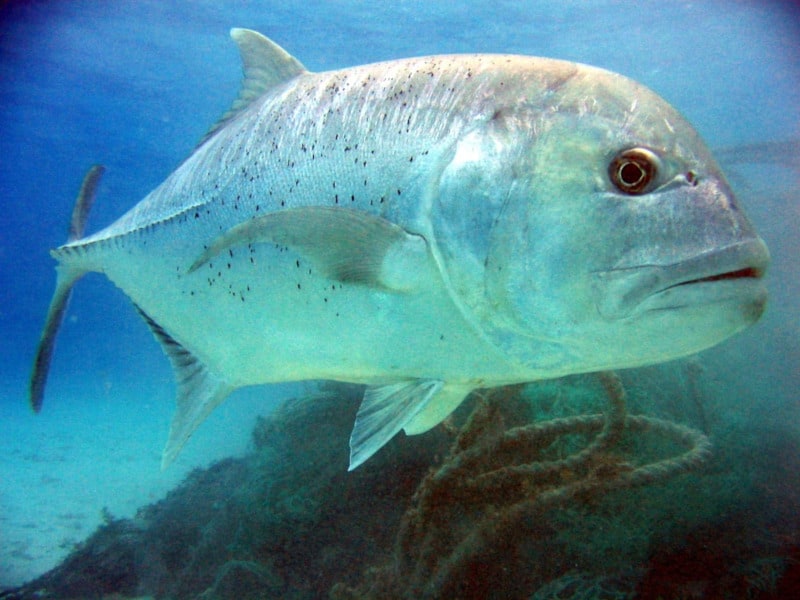
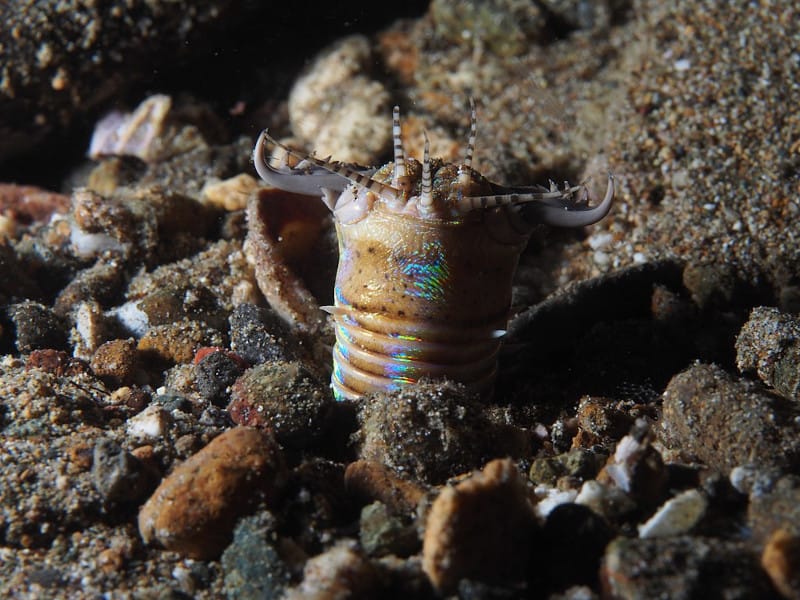
Check out our other articles on 4 Delightful Desert Plants, Japanese Dawrf Flying Squirrel, Flathead Lake, Common Water Hyacinth, Wood Frog, Japanese Beetle, Knysna Seahorse, Rainbow Snake









Leave a Reply